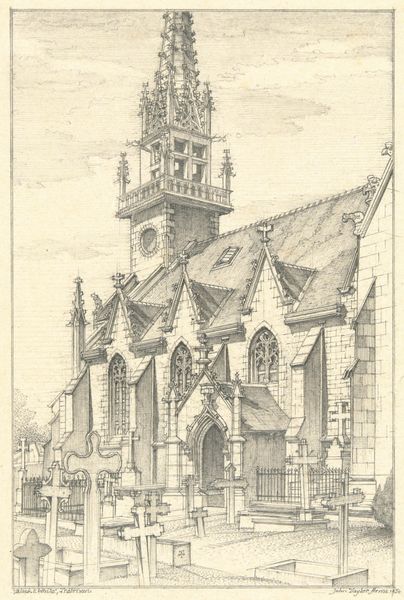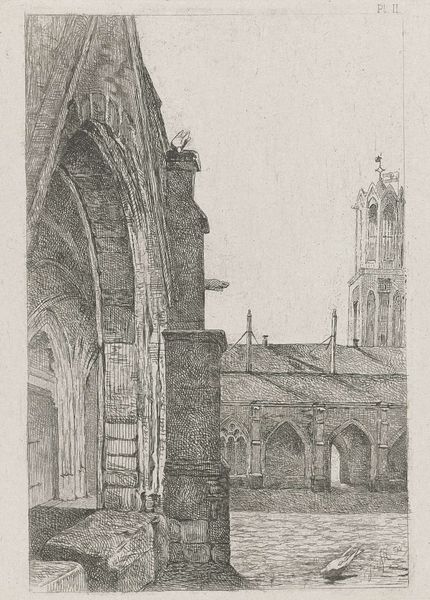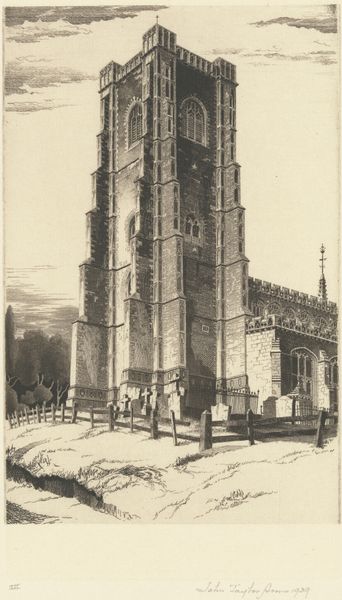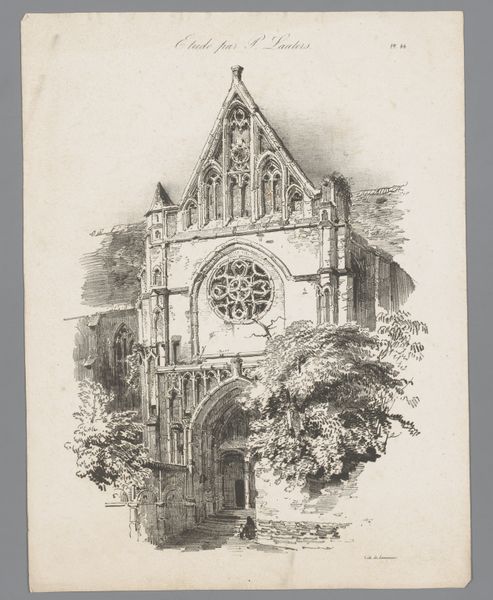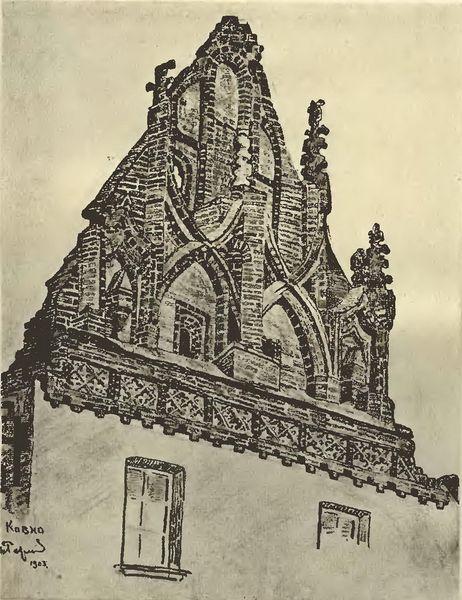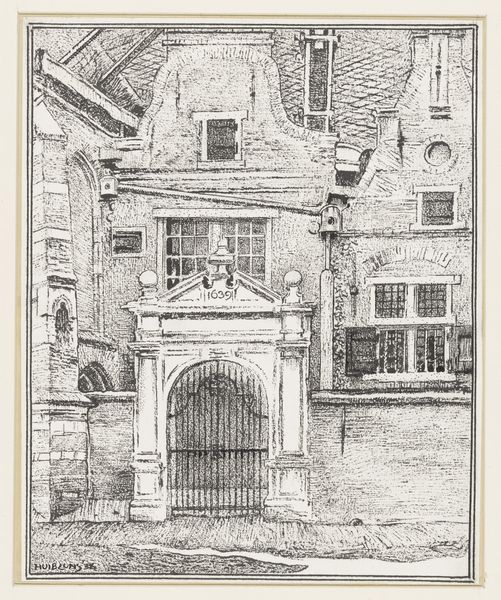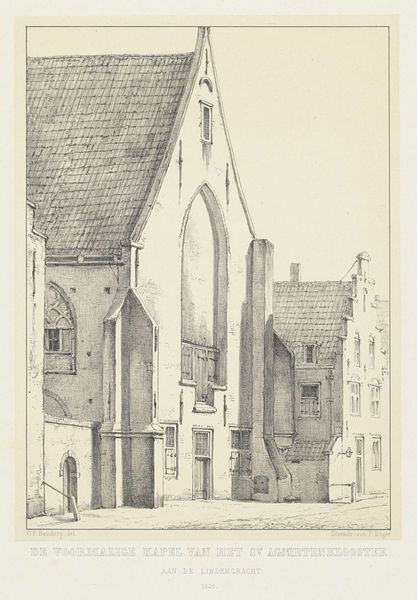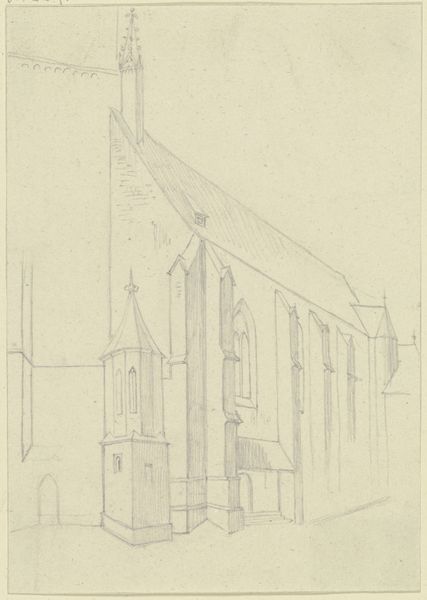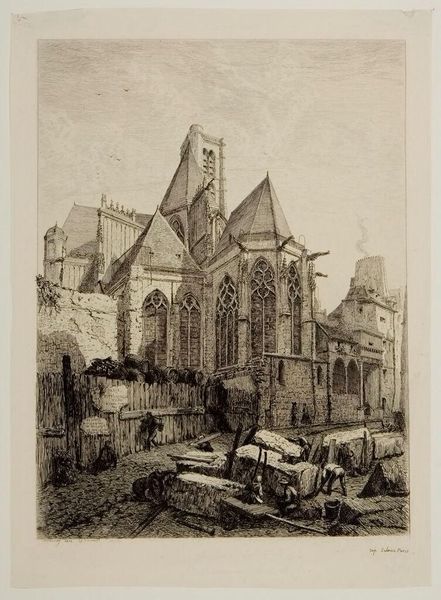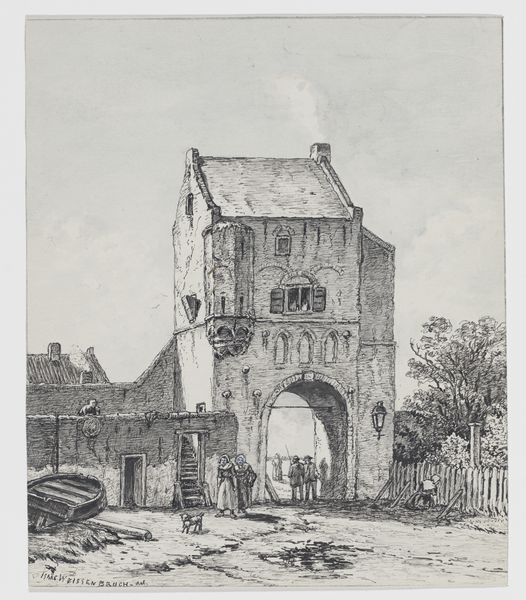
drawing, ink, pen, architecture
#
drawing
#
ink line art
#
ink
#
line
#
pen
#
cityscape
#
modernism
#
architecture
#
realism
Dimensions: height 310 mm, width 254 mm
Copyright: Rijks Museum: Open Domain
Curator: This ink drawing, created in 1938 by Huib Luns, depicts the portal of the Sint-Gommaruskerk in Enkhuizen, and is now held at the Rijksmuseum. It's a stunning example of architectural rendering. Editor: My first impression is that of quietude and strength. The density of the lines suggests resilience, and the somber tone evokes a sense of solemn contemplation. Curator: Absolutely. Luns has managed to convey a strong sense of place, and history I would add, using the stark contrast of light and shadow in line and hatching. It's clearly representational of gothic influences, but also deeply symbolic; church portals often symbolize transitions, both physical and spiritual. Editor: Yes, the drawing leans towards realism with very apparent modern leanings. Consider the use of the pen; the variation in line thickness is minimal, resulting in an image with a relatively flat appearance that really highlights the abstract nature of Luns’ lines. It gives the piece an almost diagrammatic quality. Curator: It does present a complex network of meanings, all within that detailed execution, The cityscape, with the prominent church portal, offers a glimpse into the social and religious values of the community it represents. These structures acted as silent witnesses. Editor: Silent indeed. Visually, this network creates multiple planes, each equally weighted on the page. Even though, logically, the portal takes center-stage, its formal qualities prevent it from dominating the piece, it's so elegantly and efficiently diagrammed. Curator: Which speaks volumes about Luns' ability to condense the narrative power of architectural space. We are considering, of course, an enduring, culturally charged edifice translated through the psychological prism of pre-war Europe. A kind of quiet power before a tempest. Editor: Agreed, and a poignant distillation of architectural form and societal identity, achieved with what seems to be purposeful compositional detachment. Curator: I think Luns' artistic eye allows us to view a place and an era, where tradition, religion, and the inevitable currents of societal transformation were very, very near. Editor: I'll second that thought: the artist really uses structure to allow us as much interpretive and philosophical room as the illustration offers the artist himself.
Comments
No comments
Be the first to comment and join the conversation on the ultimate creative platform.
